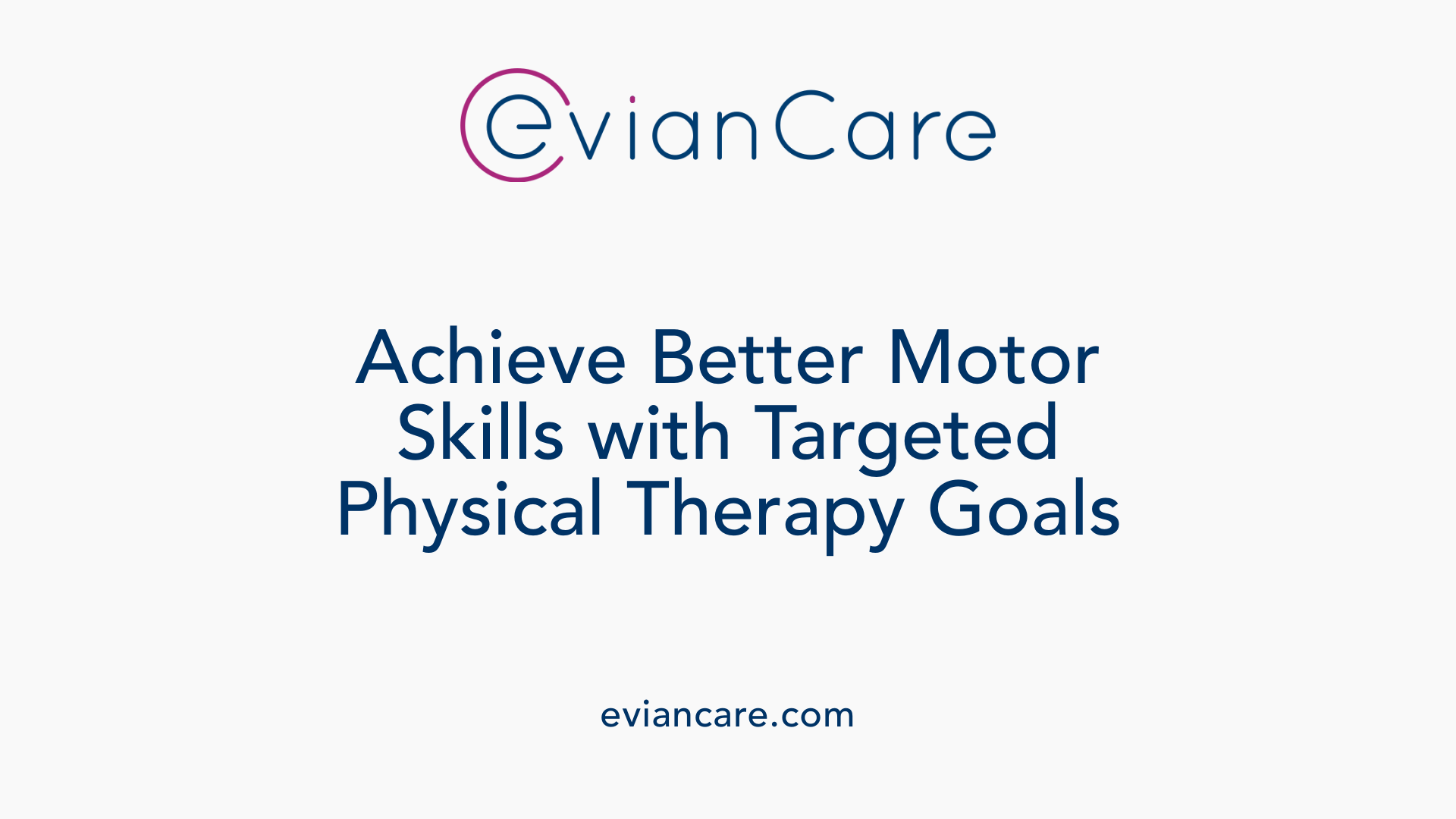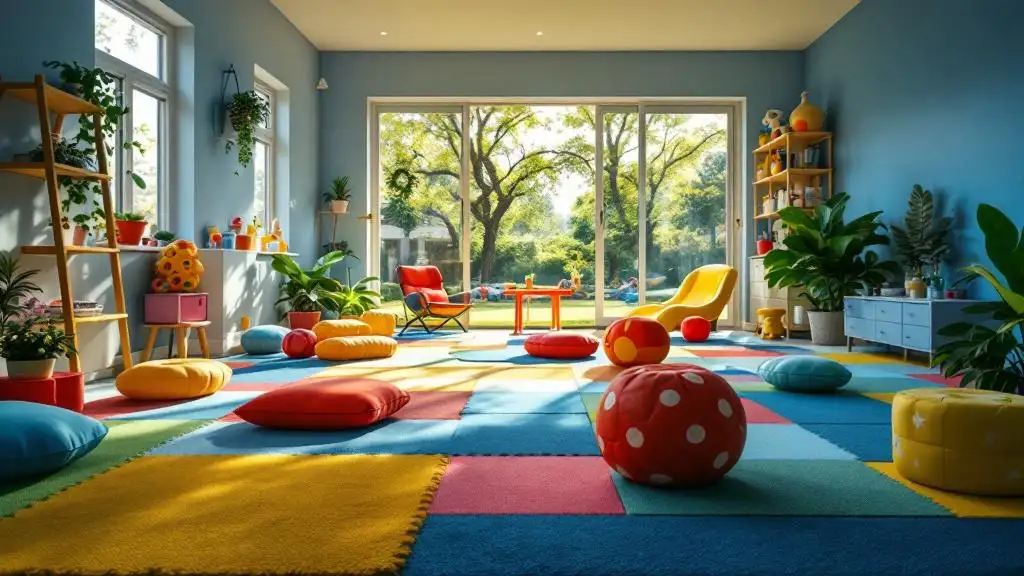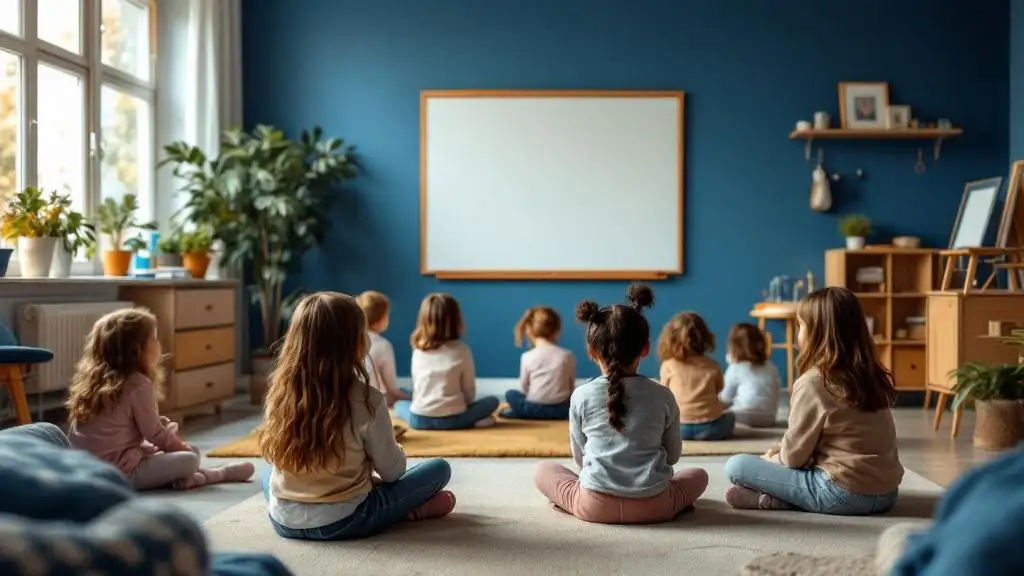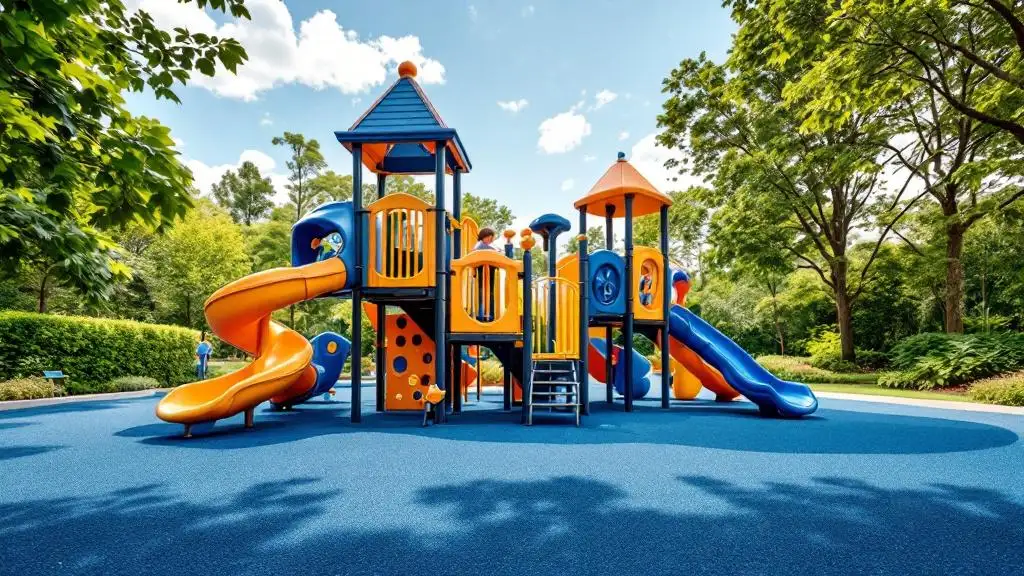
Understanding and Supporting Children with Hypotonia
Hypotonia, often called low muscle tone, is a condition characterized by unusually floppy muscles that can significantly impact a child's development. While it is not the same as muscle weakness, hypotonia affects mobility, posture, and motor milestone achievement. This article delves into effective physical therapy exercises and strategies designed to support children with hypotonia, fostering their motor development, independence, and quality of life.
Understanding Hypotonia in Children

What are the common causes and symptoms of hypotonia in children?
Hypotonia, often called low muscle tone, manifests as a floppy or "rag doll" appearance in affected children. These children usually have poor head control, delayed motor milestones such as sitting, crawling, and walking, and may exhibit weakness in their muscles. The causes of hypotonia are diverse and can include genetic disorders like Down syndrome, Prader-Willi syndrome, and Tay-Sachs disease. Neurological issues such as cerebral palsy and brain damage are also common causes. Muscular dystrophies and inherited nerve or muscle conditions may contribute as well.
Symptoms associated with low muscle tone extend beyond physical appearance. Children may struggle with feeding due to weak sucking reflexes, experience delays in speech development, and show shallow or irregular breathing patterns. Their posture can be poor, and they may tire easily because of decreased endurance. Diminished reflexes and hyperflexibility are often observed during examinations.
Diagnosis involves detailed evaluations by pediatric physical therapists and neurologists. These assessments include physical and neurological exams, and may be supplemented by MRI scans, genetic testing, electromyography (EMG), and blood tests to identify underlying causes. Early diagnosis is vital for creating effective treatment plans.
Treatment approaches focus on improving muscle strength and supporting motor skills development through physical, occupational, and speech therapies. These therapies are personalized to each child's specific needs and aim to promote normal growth, enhance motor abilities, and improve quality of life.
Understanding the causes and recognizing the symptoms of hypotonia enable caregivers and healthcare providers to initiate early interventions, which are crucial for better developmental outcomes.
Goals and Personalized Therapy for Hypotonia

What are the goals of physical therapy for children with hypotonia?
The main goals of physical therapy for children with hypotonia are to bolster muscle strength, support motor development, and enhance everyday functional abilities. Since low muscle tone affects how children support their bodies and move, therapy works to improve postural control and core stability which are vital for reaching developmental milestones. Increasing muscle tone and strength helps children develop more stable and efficient movement patterns.
Beyond strengthening, physical therapy aims to improve coordination and movement fluidity, making daily activities easier and safer. Protecting children from potential complications such as joint contractures and deformities is also a crucial aspect. Therapists use targeted exercises, proper positioning, and sensory input techniques to help children develop optimal posture and comfortable movement habits.
By doing so, therapy assists children in gaining independence, improving their quality of life, and promoting normal growth. The ultimate goal is to help children with hypotonia achieve as much motor competence and functional skills as possible, laying a foundation for better participation in daily routines and social interactions.
Effective Physical Therapy Exercises for Children with Hypotonia

What types of physical therapy exercises are suitable for children with hypotonia?
Children with hypotonia can benefit greatly from targeted physical therapy exercises designed to improve their muscle strength, coordination, and posture. These exercises often incorporate functional and developmental activities that are engaging and adaptable to each child's abilities.
One common approach includes crawling across different surfaces, which encourages weight shifting and muscle activation. Pulling to stand and squatting exercises help strengthen lower limb muscles and improve balance, while practicing tall kneeling promotes core stability and postural control.
Activities such as bilateral play, obstacle navigation, climbing, supported standing, and cruising are also integral in enhancing motor planning and endurance. These activities simulate everyday movements and help children gain confidence in their mobility.
Additionally, exercises involving gentle joint compressions support joint alignment and muscle co-activation. Tactile cues, like light massage, build muscle awareness, making children more conscious of their movements.
Dynamic positions such as prone weight-shifting exercises, quadruped, and supported standing positions facilitate muscle engagement and stability. Using therapy balls can help children improve control, strength, and vestibular input, which are crucial for balance and coordination.
Overall, physical therapy programs are highly individualized, and exercises are selected based on the child's unique needs and developmental level. Guidance from a trained physical therapist ensures that these exercises are safe, effective, and progressively challenging, promoting motor skill development and supporting the child's growth.
Developmental Activities and Parent Guidance

How can developmental activities and interventions help children with hypotonia?
Engaging in targeted developmental activities and therapies is essential for children with hypotonia. These activities aim to strengthen muscles, improve coordination, and support the development of fundamental motor skills.
Play-based therapy forms a cornerstone of intervention. Activities like crawling across various surfaces, pulling to stand, squatting, and climbing help build muscle strength and further motor control. Such exercises also promote better posture and balance, enabling children to achieve developmental milestones more effectively.
Physical and occupational therapists design individualized programs that incorporate these movements into daily routines. They focus on making therapy enjoyable and motivating by integrating playful activities like bilateral play, obstacle navigation, and supported standing. This approach encourages active participation, which is critical for motor learning and development.
Supporting speech and fine motor skills is also integrated into therapy plans. For example, core strengthening exercises, oral-motor activities, and activities using therapy balls help improve control over speech muscles, swallowing, and hand-eye coordination.
Early intervention through these activities can significantly influence a child's growth trajectory. It helps increase muscle tone, improve endurance, and support overall functional abilities, leading to greater independence in daily tasks.
Parents and caregivers can facilitate this progress by engaging children in these developmental activities at home. Consistent, playful practice not only enhances physical development but also boosts confidence and emotional well-being.
In summary, customized, play-based activities and exercises are vital in supporting children with hypotonia, enabling them to develop crucial motor skills, achieve developmental milestones, and participate actively in their environment.
Empowering Parents and Caregivers through Education Resources
What educational resources are available to help parents and caregivers manage hypotonia?
Parents and caregivers play a vital role in supporting children with hypotonia. To do this effectively, they can turn to various educational resources designed to increase understanding and provide practical strategies.
Healthcare providers such as pediatricians, occupational therapists, and physical therapists offer personalized guidance and develop specific treatment plans tailored to each child's needs. These professionals are essential sources of knowledge on exercises, activities, and adaptive techniques.
Reputable online organizations and websites focusing on pediatric therapy—such as the American Occupational Therapy Association or the Multiple Sclerosis Society—provide comprehensive information about therapeutic activities, developmental milestones, and supportive interventions. These resources often include instructional videos, activity ideas, and detailed guides for daily routines.
Support groups for families dealing with hypotonia or related conditions offer emotional support, practical tips, and shared experiences. They can be local or online communities where parents exchange advice on managing symptoms, navigating therapies, and encouraging their child's progress.
Educational programs for parents, sometimes run by hospitals or non-profit organizations, provide workshops or seminars on techniques like sensory integration, play therapy, and positioning strategies. Learning these skills enables parents to incorporate therapeutic activities into everyday life.
Understanding specific exercises that promote muscle strength—such as crawling on different surfaces or supported standing—helps children develop motor skills more effectively. Additionally, classroom strategies and adaptive equipment can facilitate participation in school activities.
Staying informed through ongoing education allows parents and caregivers to become confident advocates for their children, fostering a supportive environment for growth and development.
Search suggestion for further resources
If you're looking for additional support and information, searching online with terms like "Parent resources for hypotonia management" can lead to useful articles, community support networks, and professional guidance tailored to your needs.
Research, Evidence-Based Practices, and Sports for Children with Low Tone
Research indicates several effective therapies and exercises for children with hypotonia. Early intervention is particularly beneficial, focusing on hands-on therapy, developmental activities, and family education to boost motor skills. Evidence supports the use of strengthening exercises, such as resistance training and weight-bearing activities, which help improve muscle tone and stability.
Pediatric physical therapists often incorporate functional movements that promote motor development. For example, treadmill training has demonstrated positive effects in infants with Down syndrome experiencing hypotonia by encouraging walking and gait improvements. Massage therapy and orthoses are additional strategies that may support muscle activation and joint alignment, although more research is needed to refine these methods.
When it comes to sports and physical activities, fun and engaging exercises are recommended. Warm-up activities like bouncing on a mini trampoline, crawling, and ball games can help children safely activate muscles and build endurance. Core-strengthening exercises, including bridges or superhero floats, support posture and balance.
Climbing structures, tug-of-war, obstacle courses, and supported standing activities promote gross motor skills and coordination. These activities not only enhance strength but also boost confidence and enjoyment. Fine motor tasks and oral-motor exercises can complement physical activity to promote overall muscle development.
| Exercise Type | Specific Activities | Goals | Evidence/Notes |
|---|---|---|---|
| Resistance Training | Wall sits, leg kicks, planks, push-ups | Increase muscle strength | Supported by research for motor development |
| Gross Motor Play | Climbing, crawling, obstacle courses | Improve coordination and endurance | Recommended for functional skills |
| Balance and Posture | Supported standing, ergonomic advice | Correct posture, prevent deformities | Part of comprehensive therapy |
| Fun Activities | Ball games, jumping, tug-of-war | Enhance muscle activation and endurance | Suitable for motivation |
Overall, combining structured therapeutic exercises with engaging play and sports not only promotes muscle development but also encourages active participation and joy. Consistent, tailored programs delivered by qualified therapists have shown to be effective in improving outcomes for children with hypotonia.
Supporting Development through Tailored Physical Therapy
Effective management of hypotonia requires a comprehensive, individualized approach that combines targeted exercises, developmental activities, parent education, and evidence-based therapies. Physical therapists play a vital role in assessing each child's unique needs and designing programs that promote muscle tone, motor skills, and independence. Through consistent engagement in appropriate activities—whether at home or in therapy—children with hypotonia can achieve meaningful progress, participate more fully in daily life, and reach their full potential.
References
- 5 Physical Therapy Exercises for Low Muscle Tone (Hypotonia)
- Physical Therapy Guide to Hypotonia (Low Muscle Tone) - Choose PT
- Hypotonia in Children: Physical Therapy Treatment
- 5 Ways To Improve Low Tone In Children You NEED To Hear - Kid PT
- Kids Health Info : Low muscle tone - The Royal Children's Hospital
- Top 5 In-Home Exercises for Low Muscle Tone in Autism
- Hypotonia: Exploring Muscle Tone and Managing Treatment
- Low Tone | Hypotonia | Treatment | Helping Hands












